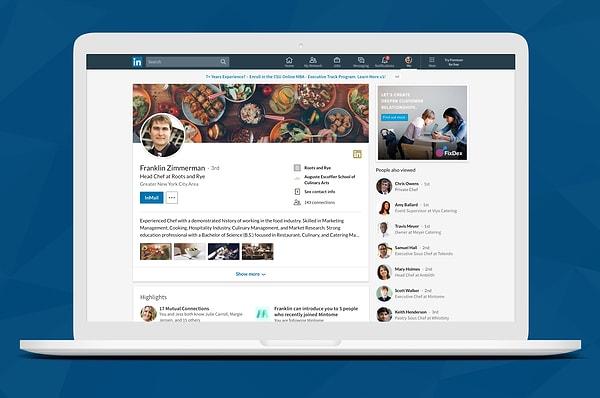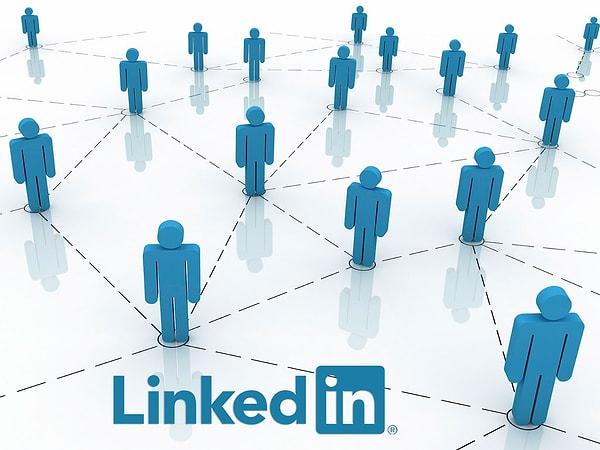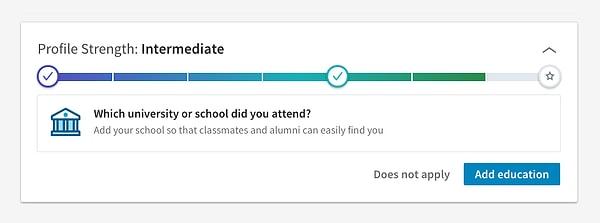Mastering LinkedIn: A Comprehensive Guide to Boosting Your Professional Profile
In the modern professional landscape, LinkedIn has become an indispensable tool for networking, job hunting, personal branding, and career growth. With over 700 million users globally, it's a platform where you can connect with industry leaders, showcase your expertise, and discover new opportunities. However, to make the most of LinkedIn's potential, you need more than just a profile. You need a strategic approach and a deep understanding of the platform's features. In this comprehensive guide, we'll explore tips and strategies for using LinkedIn effectively to enhance your professional presence and achieve your career goals. From optimizing your profile to connecting with the right people, this guide will cover everything you need to know to make LinkedIn work for you.
Chapter 1: Creating an Outstanding LinkedIn Profile

Your LinkedIn profile is your digital business card, and it's crucial to make a strong first impression. Here are some tips for optimizing your profile:
The Anatomy of a Great Profile:
Your LinkedIn profile consists of several key elements, including your profile picture, headline, summary, experience, skills, and recommendations. Each section should be carefully crafted to represent your professional brand.
Crafting a Captivating Headline:
Your headline is one of the first things people see on your profile. It should be concise, yet informative. Use it to highlight your current role and key skills.
Crafting a Compelling Summary:
Your summary is your opportunity to tell your professional story. Share your career journey, aspirations, and what you bring to the table. Keep it engaging and personable.
Showcasing Your Experience and Achievements:
List your work experience, focusing on accomplishments and contributions. Use action verbs to describe your roles and quantify your achievements when possible.
Highlighting Skills and Endorsements:
Select skills that align with your expertise and the industry you're in. Encourage connections to endorse your skills, which adds credibility to your profile.
Choosing the Right Profile Picture:
Choose a professional and high-quality profile picture. Dress appropriately and maintain a friendly expression. Your picture is your digital handshake.
Customizing Your LinkedIn URL:
Customize your LinkedIn URL to make it more user-friendly. A clean URL is easier to share and remember.
Gathering Recommendations and Endorsements:
Recommendations from colleagues and supervisors provide valuable social proof. Encourage your connections to write genuine recommendations for your profile.
Chapter 2: Building a Relevant Network

Building a strong network on LinkedIn is essential for expanding your professional opportunities. Here's how to do it effectively:
Connecting with Colleagues and Classmates:
Start by connecting with current and former colleagues, as well as classmates. These are the people who know your work and can vouch for your skills.
Engaging with Industry Influencers:
Follow and connect with influencers and thought leaders in your industry. Their insights can provide valuable knowledge and networking opportunities.
Using Advanced Search for Targeted Connections:
LinkedIn's advanced search feature allows you to find connections based on specific criteria. Use it to identify potential mentors, partners, or job opportunities.
Joining and Participating in LinkedIn Groups:
LinkedIn groups are excellent for networking with professionals who share your interests. Join relevant groups and engage in discussions to increase your visibility.
Networking at Industry Events:
Attend virtual or in-person industry events and conferences. These events provide a great opportunity to meet professionals in your field.
Growing Your Network Strategically:
While it's important to expand your network, prioritize quality over quantity. Connect with people you genuinely know or have a reason to connect with. A smaller, engaged network can be more valuable than a large, inactive one.
Chapter 3: Engaging with Your Network

Being active and engaged on LinkedIn is essential for maintaining a strong presence. Here's how to effectively engage with your network:
Sharing Relevant Content:
Share articles, news, and updates related to your industry. This positions you as someone who stays informed and contributes to meaningful discussions.
Writing Thoughtful Articles:
Consider writing articles on LinkedIn to showcase your expertise. Share insights, case studies, or industry trends. Well-written articles can garner attention and engagement.
Commenting and Liking Posts:
Engage with your network's content by commenting thoughtfully and liking posts. It's a way to show your support and foster relationships.
Sending Personalized Messages:
Rather than sending generic messages, reach out personally to your connections. Offer congratulations, share insights, or inquire about their well-being.
Offering Help and Providing Value:
Be helpful to your network by offering assistance, sharing resources, or making introductions. A giving attitude is often reciprocated.
Nurturing Professional Relationships:
Relationships require nurturing. Check in with your connections periodically, offer assistance when needed, and maintain a friendly rapport.
Being Consistent and Authentic:
Consistency is key to staying visible on LinkedIn. Post and engage regularly, but always be authentic and true to your professional identity.
Chapter 4: Leveraging LinkedIn for Job Hunting

LinkedIn is a powerful tool for job seekers. Here's how to make the most of it during your job search:
Creating a Strong Digital Resume:
Your LinkedIn profile essentially serves as your digital resume. Ensure it's up to date with your latest work experiences, skills, and accomplishments.
Exploring Job Listings:
Use LinkedIn's job search feature to find relevant job openings. You can filter by location, industry, company, and more to narrow down your options.
Leveraging the 'Open to Work' Feature:
Indicate that you're open to job opportunities on your profile using the 'Open to Work' feature. It signals to recruiters that you're actively seeking new roles.
Getting Recommendations from Colleagues:
Ask colleagues or supervisors for recommendations on LinkedIn. Positive endorsements can make you stand out to potential employers.
Following Company Pages:
Follow the pages of companies you're interested in working for. This keeps you updated on their latest news and job openings.
Researching Companies and Interviewers:
Use LinkedIn to research potential employers and interviewers. A little background knowledge can go a long way in interviews.
Preparing for Interviews:
You can use LinkedIn to prepare for job interviews by understanding the company culture, mission, and the background of your interviewers.
Chapter 5: Enhancing Your Personal Brand

Your personal brand is how you present yourself professionally. Here's how LinkedIn can help you build and enhance it:
Establishing Your Expertise:
Share your expertise and knowledge in your field by contributing to discussions and providing valuable insights.
Sharing Success Stories and Projects:
Highlight your achievements by sharing success stories and projects you've worked on. This demonstrates your capabilities.
Showcasing Your Soft Skills:
Don't forget to showcase your soft skills like leadership, teamwork, and communication. These are often just as important as technical skills.
Defining Your Unique Selling Proposition (USP):
Identify what sets you apart from others in your industry. Your USP should be evident in your profile and interactions.
Using LinkedIn Publishing:
Publish articles or posts on LinkedIn to establish yourself as a thought leader in your field. Share your knowledge and experiences.
Creating a Content Calendar:
To stay consistent in your content sharing, consider creating a content calendar. This helps you plan and schedule your posts in advance.
Measuring Your Impact:
Use LinkedIn Analytics to track the reach and engagement of your posts. This data can help you refine your content strategy.
Chapter 6: Growing Your Business with LinkedIn

If you're a business owner or entrepreneur, LinkedIn can be a powerful platform for growth. Here's how to leverage it:
Using LinkedIn for B2B Marketing:
LinkedIn is an ideal platform for business-to-business (B2B) marketing. It's where you can connect with other businesses and decision-makers.
Building a Company Page:
Create a compelling company page that showcases your business's offerings, values, and achievements.
Creating and Sharing Valuable Content:
Regularly share content that's relevant to your industry and audience. This can position your business as an authority.
Using Sponsored Content and Ads:
Consider using sponsored content and ads to reach a wider audience. LinkedIn's ad platform allows you to target specific demographics.
Leveraging LinkedIn Analytics:
Analyze the performance of your company page and posts with LinkedIn Analytics. Use the insights to refine your marketing strategy.
Generating Leads and Building Partnerships:
Connect with potential clients and partners on LinkedIn. Engage in meaningful conversations that can lead to collaboration.
Establishing Thought Leadership:
To build your business's reputation, establish thought leadership within your industry. Share your expertise and insights.
Chapter 7: Navigating Job Transitions and Career Changes

LinkedIn is an excellent platform for those going through career transitions. Here's how to navigate these changes effectively:
Communicating Career Shifts:
When changing careers, update your LinkedIn profile to reflect your new direction. Clearly communicate your intentions.
Leveraging Transferable Skills:
Emphasize transferable skills on your profile. Explain how skills from your previous career can benefit your new one.
Targeting New Opportunities:
Use LinkedIn to research and target opportunities in your desired field. Follow companies and individuals relevant to your new career path.
Building a Personal Brand for Change:
Your personal brand should adapt to your new career goals. Update your profile and content to align with your fresh start.
Seeking Guidance from Your Network:
Your LinkedIn network can provide valuable advice and support during career transitions. Don't hesitate to reach out.
Learning from Industry Peers:
Follow industry leaders who have successfully transitioned to your desired field. Learn from their experiences and insights.
Setting and Pursuing New Goals:
Clearly define your career goals on LinkedIn. Whether it's a new job, starting a business, or expanding your network, make your objectives known.
Chapter 8: Maintaining Privacy and Security

Ensuring your privacy and security on LinkedIn is essential. Here are some tips to keep your profile safe:
Adjusting Privacy Settings:
Customize your privacy settings to control who can see your profile, your connections, and your activity on the platform.
Managing Connection Requests:
Be cautious about accepting connection requests from unknown individuals. Verify the profiles of those you connect with.
Protecting Your Personal Information:
Avoid sharing sensitive personal information like your home address or phone number. Keep it professional.
Dealing with Unsolicited Messages:
If you receive unsolicited messages, evaluate them carefully. If they seem suspicious, it's best to ignore or report them.
Reporting Inappropriate Content:
LinkedIn provides reporting tools. If you encounter inappropriate content or behavior, don't hesitate to report it.
Recognizing Phishing Attempts:
Be vigilant for phishing attempts. LinkedIn is occasionally targeted by scammers. Don't click on suspicious links or provide sensitive information.
Staying Informed About LinkedIn's Updates:
LinkedIn frequently updates its features and policies. Stay informed to ensure you're using the platform safely and effectively.
Chapter 9: Monitoring Your Progress and Success

To continually improve your LinkedIn experience, it's crucial to monitor your progress and measure your success. Here's how to do it:
Setting Clear Objectives:
Define your goals on LinkedIn. Whether it's increasing your network, finding a job, or expanding your business, having clear objectives will guide your efforts.
Measuring Key Performance Indicators (KPIs):
Identify KPIs that align with your objectives. These could include the number of connections, profile views, or engagement on your posts.
Using LinkedIn Analytics:
LinkedIn provides robust analytics tools to track your profile's performance. Use these insights to adjust your strategies.
Refining Your Strategies:
Based on your analytics, refine your strategies. If certain tactics are working well, invest more in them. If not, consider changes.
Adapting to Changing Goals:
Your professional goals may evolve. Be flexible in adapting your LinkedIn strategies to match your changing objectives.
Celebrating Your Achievements:
Celebrate your LinkedIn achievements, whether it's reaching a milestone in your network or securing a new job.
Seeking Feedback from Your Network:
Ask for feedback from your connections about your LinkedIn presence. They can offer valuable insights and suggestions.
Keşfet ile ziyaret ettiğin tüm kategorileri tek akışta gör!


Send Comment